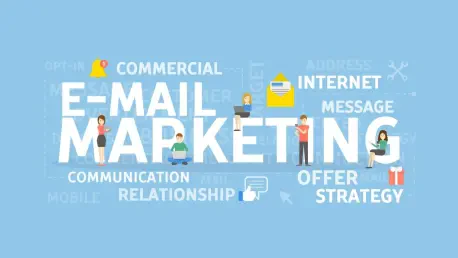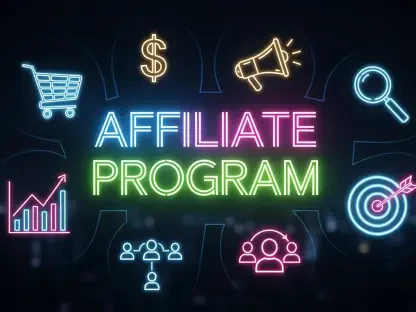Imagine launching an email campaign that doubles your click-through rates overnight, simply by tweaking a single element like the subject line, and realizing that in today’s hyper-competitive digital marketing landscape, such breakthroughs are not just possible—they’re within reach through the power of email A/B testing. This guide aims to equip marketers with a proven, step-by-step framework to optimize email campaigns, boost engagement, and drive measurable revenue. By mastering this data-driven technique, professionals can transform guesswork into precision, ensuring every email resonates with the target audience.
The purpose of this guide is to demystify A/B testing, a method where two variants of an email are sent to segmented groups to determine which performs better. Its importance cannot be overstated in an era where consumer expectations are sky-high, and every interaction counts toward building brand loyalty. With email remaining a top channel for both B2B and consumer engagement, refining campaigns through testing is a strategic necessity for staying ahead of the curve.
This comprehensive roadmap will walk through each critical phase of A/B testing, from setting clear objectives to scaling winning strategies across broader initiatives. Marketers will learn how to isolate variables, interpret data with statistical rigor, and integrate cutting-edge tools like artificial intelligence for efficiency. Beyond tactics, the guide addresses ethical considerations to maintain subscriber trust, ensuring long-term success in a privacy-conscious world.
Why Email A/B Testing Is Your Key to Marketing Wins
Email A/B testing stands as a cornerstone of modern digital marketing, offering a direct path to enhanced engagement and increased revenue. At its essence, the process involves creating two versions of an email—differing in one specific element like a call-to-action or design—and sending them to separate audience segments. By measuring performance metrics such as open rates or conversions, marketers can identify which variant drives better results, turning intuition into actionable insights.
The true power of this approach lies in its ability to deliver data-driven decisions in a landscape where every click matters. Unlike broad assumptions about audience preferences, A/B testing provides concrete evidence of what resonates, whether it’s a punchy subject line or a specific send time. This precision not only improves campaign outcomes but also builds a deeper understanding of subscriber behavior, informing future strategies.
Looking ahead, this guide will explore essential tactics for effective testing, from defining hypotheses to analyzing results with patience. It will also cover how technological advancements, such as AI-driven tools, are revolutionizing the process, alongside the importance of ethical practices amid evolving privacy regulations. By adopting these principles, marketers can unlock significant wins in their email efforts.
The Evolution and Importance of A/B Testing in Email Marketing
A/B testing in email marketing has undergone a remarkable transformation over recent years, shifting from a rudimentary trial-and-error method to a sophisticated, analytics-powered practice. Initially, marketers relied on manual comparisons with limited data, often lacking the tools to draw reliable conclusions. Today, advanced platforms and automation have elevated testing into a precise science, enabling real-time insights and scalability.
The significance of this evolution is evident in today’s competitive digital environment. With consumers bombarded by countless messages daily, optimizing key metrics like open rates and click-throughs is no longer optional—it’s imperative. A/B testing empowers marketers to fine-tune every element of an email, ensuring content cuts through the noise and aligns with heightened audience expectations for relevance and personalization.
Moreover, this technique plays a pivotal role in broader marketing objectives, especially as regulatory scrutiny around data usage intensifies. By focusing on incremental improvements through testing, businesses can maximize return on investment while adhering to privacy standards. This alignment with both performance and compliance underscores why A/B testing remains an indispensable tool for staying relevant and effective in the current market.
A Step-by-Step Guide to Effective Email A/B Testing
Step 1: Define Clear Objectives and Hypotheses
Embarking on an A/B testing journey begins with establishing specific goals to guide the process. Whether the aim is to boost click-through rates or enhance conversion numbers, clarity in purpose ensures that efforts remain focused. A well-defined objective acts as a compass, directing every subsequent decision toward meaningful outcomes in email campaigns.
Crafting a Focused Hypothesis
A critical component of this initial step is formulating a precise hypothesis to test. This means posing a single, clear question, such as whether a shorter subject line will increase open rates. By narrowing the scope to one variable, marketers can avoid ambiguity and ensure that results provide actionable insights rather than vague correlations.
Aligning Goals with Business Outcomes
Equally important is tying testing goals to overarching business metrics, such as revenue growth or subscriber retention. This alignment guarantees that each test contributes to larger strategic priorities, rather than existing in isolation. When objectives reflect organizational aims, the impact of A/B testing extends far beyond individual emails to influence long-term success.
Step 2: Isolate Variables for Precise Insights
The next phase emphasizes testing one variable at a time to pinpoint what influences performance. Whether experimenting with subject lines, imagery, or button placement, isolating a single element ensures that outcomes can be directly attributed to that change. This methodical approach eliminates guesswork and builds a clear picture of cause and effect.
Choosing High-Impact Elements to Test
Certain variables often yield more significant results and should be prioritized for testing. Elements like personalization in subject lines, pre-header text, or optimal send times frequently drive notable differences in engagement. Identifying these high-impact areas allows marketers to focus resources on changes likely to produce substantial improvements.
Avoiding Overlapping Changes
A common pitfall to avoid is altering multiple aspects of an email simultaneously. Testing several variables together muddies the data, making it impossible to determine which change drove the result. Sticking to one modification per test preserves the integrity of findings, ensuring conclusions are reliable and applicable to future campaigns.
Step 3: Segment Audiences and Set Sample Sizes
Dividing the email list into comparable segments is a foundational step for valid A/B testing. These groups must be representative of the broader audience to ensure results are generalizable. Additionally, determining an appropriate sample size is crucial to achieve statistical significance, ideally targeting a 95% confidence level for dependable outcomes.
Balancing Group Sizes for Accuracy
Creating evenly split segments helps avoid skewed data that could misrepresent performance. Unequal groups may introduce bias, where one variant appears more successful due to audience differences rather than content effectiveness. A balanced split provides a fair comparison, strengthening the credibility of the test results.
Calculating Statistical Confidence
Ensuring statistical confidence requires using tools or formulas to confirm when data is reliable. Rushing to conclusions with insufficient responses risks acting on false positives. Marketers should monitor response rates over time, waiting until the sample size supports confident decision-making before proceeding with any changes.
Step 4: Execute Tests and Analyze Results
With preparations complete, the focus shifts to launching the test and closely tracking performance. This stage involves sending variants to the segmented groups and monitoring key metrics over a set period. Patience is essential, as sufficient data collection is necessary to draw accurate conclusions about which version outperforms the other.
Tracking Key Metrics Effectively
The metrics to prioritize depend on the initial objectives set for the test. For instance, if the goal was to increase opens, attention should center on open rates, while a conversion-focused test would track click-throughs or sales. Selecting relevant indicators ensures that analysis aligns with the intended purpose of the experiment.
Avoiding Premature Conclusions
One critical error to avoid is halting a test too soon based on early trends. Fluctuations in data can occur, and premature decisions may overlook later shifts that reveal the true winner. Allowing the test to run its full course guarantees that results reflect genuine audience behavior rather than temporary anomalies.
Step 5: Iterate and Scale Winning Strategies
Once a winning variant is identified, the next step is to apply those insights to future campaigns. This involves rolling out the successful version to a larger audience while continuing to monitor its effectiveness. Iteration ensures that learnings are not static but evolve with each test to refine overall email strategy.
Implementing Results Across Campaigns
Deploying a winning email variant across broader campaigns maximizes its impact on engagement and revenue. This rollout should be systematic, ensuring that the tested element retains its effectiveness at scale. Documenting results also helps build a repository of proven tactics for future reference.
Using Control Groups for Validation
Incorporating control groups during scaling validates the long-term impact of changes. By comparing performance against a baseline group that receives the original email, marketers can confirm whether improvements hold over time. This practice safeguards against short-term flukes, focusing on sustainable metrics like subscriber lifetime value.
Core Takeaways for Mastering A/B Testing
- Define clear, business-aligned objectives and hypotheses to guide testing efforts.
- Isolate single variables to gain precise, actionable insights from each experiment.
- Segment audiences effectively and ensure statistical significance for reliable data.
- Analyze results patiently, resisting the urge to draw premature conclusions.
- Scale winning strategies thoughtfully while tracking long-term impact with control groups.
Future Trends and Strategic Impact of A/B Testing
Email A/B testing continues to evolve with technological advancements, particularly through the integration of artificial intelligence. AI tools now offer predictive insights by analyzing historical data to suggest high-potential test variants, streamlining the process. This efficiency allows marketers to run multiple experiments simultaneously, a game-changer for enterprises managing large-scale campaigns.
Emerging trends also include innovative testing ideas like dynamic content personalization and multimedia embeds, which cater to diverse audience preferences. Hybrid models combining traditional A/B testing with multivariate approaches are gaining traction, enabling simultaneous evaluation of multiple variables. These developments promise to keep email marketing agile amid shifting digital behaviors.
Challenges such as privacy regulations and subscriber fatigue must be navigated carefully to maintain trust. Real-world examples, like e-commerce brands achieving significant revenue uplifts through targeted testing, highlight the financial stakes. Aligning A/B testing with enterprise-level goals ensures that tactical wins translate into strategic growth, positioning email as a dominant channel in B2B and consumer spaces.
Final Thoughts: Transform Your Email Marketing with A/B Testing
Reflecting on the journey through email A/B testing, the structured approach provided has empowered marketers to turn raw data into refined campaigns. Each step, from defining objectives to scaling strategies, has built a foundation for measurable success. The blend of creativity, analytics, and technology has proven instrumental in navigating the complexities of digital engagement.
Looking ahead, the next actionable step is to initiate a test using the outlined framework, starting with a single high-impact variable like subject line personalization. Experimenting with AI-driven tools could further accelerate insights, while maintaining ethical standards ensures subscriber trust remains intact. Staying adaptable to emerging trends will keep campaigns relevant in a dynamic landscape.
Beyond immediate actions, consideration of long-term integration is vital. Embedding A/B testing into routine marketing processes lays the groundwork for continuous improvement. By fostering a culture of experimentation, businesses can sustain momentum, leveraging data to drive innovation and maintain a competitive edge in email marketing.









